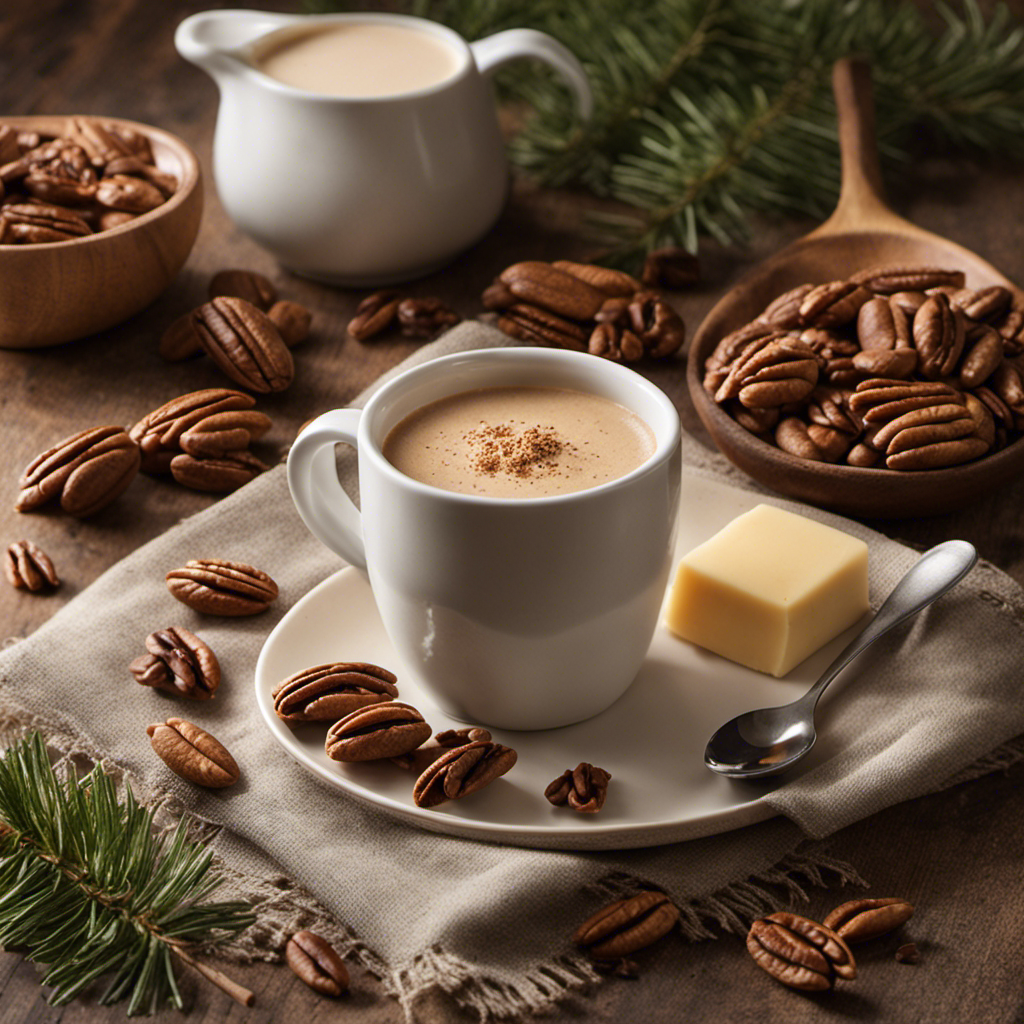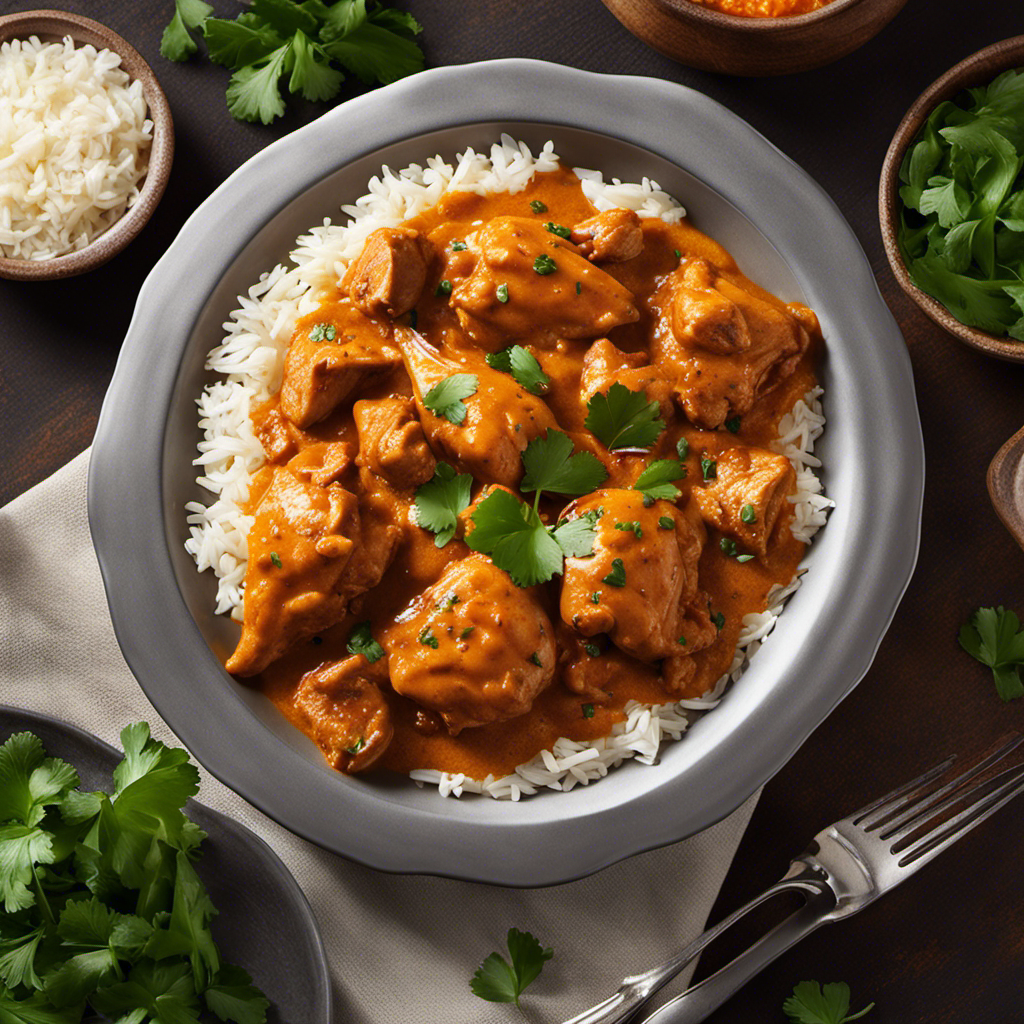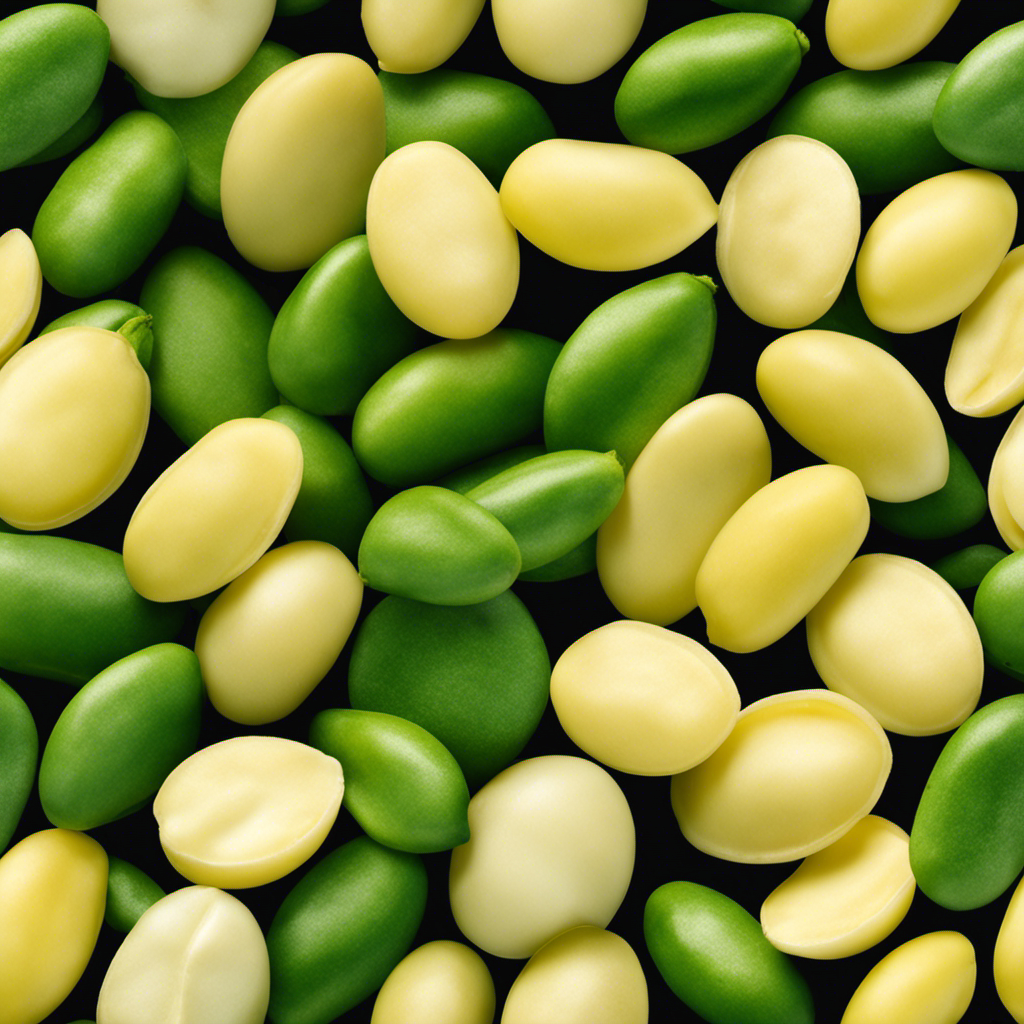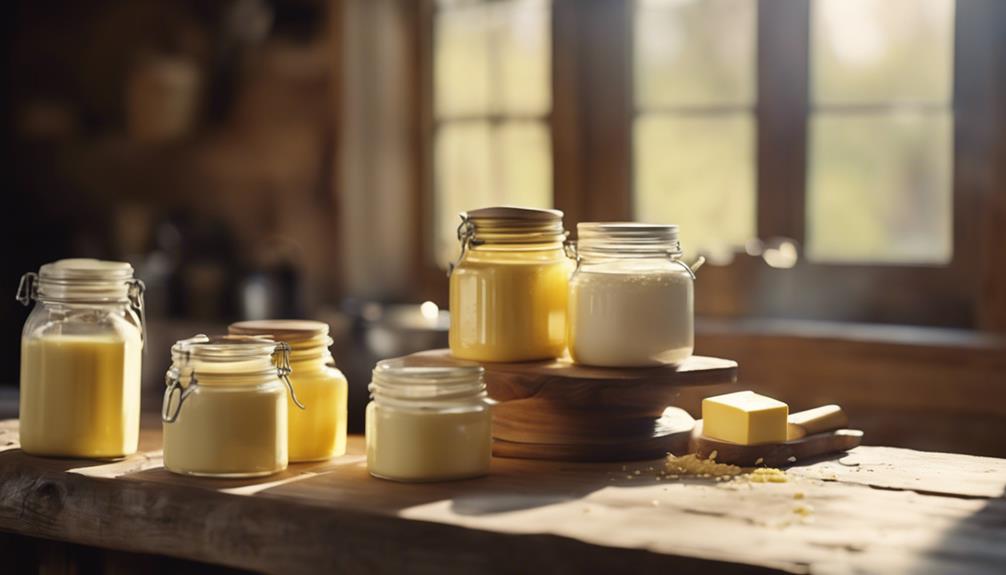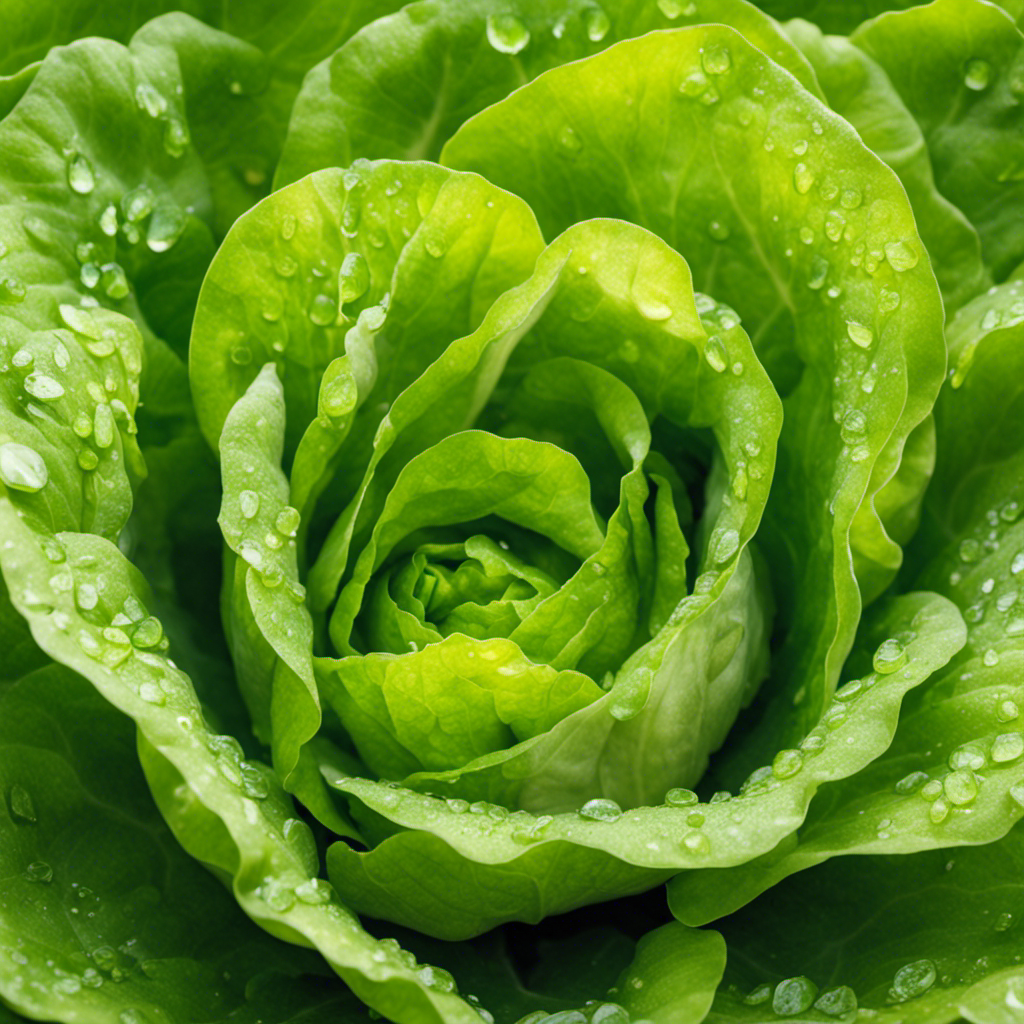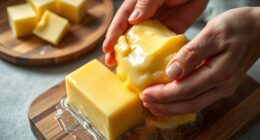I know exactly where to find the delicious International Delight Southern Butter Pecan Creamer. Whether you prefer shopping at local stores or online, getting this creamy treat is easy and convenient.
Specialty food shops and the official International Delight website also offer this irresistible flavor. And let’s not forget about bulk stores and coffee shops that proudly serve this delectable creamer.
Get ready to elevate your coffee experience to a whole new level.
Key Takeaways
- Local grocery stores, online retailers, specialty food shops, and the International Delight website are all options for purchasing International Delight Southern Butter Pecan Creamer.
- Buying Southern Butter Pecan Creamer offers a unique and delightful taste, convenience, and the opportunity to explore other flavors offered by International Delight, enhancing the coffee or tea experience.
- When comparing prices, consider factors such as taste, ingredients, and brand reputation. Premium brands may offer a richer and more authentic flavor, while cheaper options may contain more artificial additives. Homemade creamer is a budget-friendly alternative.
- Customer reviews and ratings provide insights into creamer quality, help determine if it is right for you, and indicate availability in different regions. Online customer reviews are available for reference.
Local Grocery Stores
You can find International Delight Southern Butter Pecan creamer at local grocery stores. It is a popular creamer flavor that adds a delightful nutty and buttery taste to your coffee.
The local availability of this creamer makes it easily accessible for coffee lovers like me. Instead of relying on coffee shop alternatives, I prefer to have this creamer at home, allowing me to enjoy a delicious cup of coffee whenever I want.
The convenience of being able to purchase it at local grocery stores means that I don’t have to go out of my way to satisfy my coffee cravings. Whether I need a quick pick-me-up in the morning or a comforting cup of coffee in the evening, having this creamer readily available at local grocery stores is a great option.
Online Retailers
When it comes to online shopping, it’s important to find the best retailers that offer a wide selection of products, competitive prices, and excellent customer service.
Price comparison options can also help you find the best deals and save money.
Additionally, customer reviews and ratings can provide valuable insights and help you make informed purchasing decisions.
Best Online Retailers
One of the best online retailers to buy International Delight Southern Butter Pecan creamer is Amazon. They offer a wide variety of options for purchasing this delicious creamer, including bulk purchasing options. Whether you’re looking to stock up for your home or for your business, Amazon has you covered.
Specialty coffee shops can also benefit from purchasing this creamer in bulk from Amazon, as it allows them to meet the demands of their customers while saving money in the process. In addition to the convenience of online shopping, Amazon offers competitive prices and fast shipping, ensuring that you can enjoy your favorite creamer without any hassle.
With its extensive selection and reliable service, Amazon is definitely a top choice for buying International Delight Southern Butter Pecan creamer.
Now, let’s explore some other price comparison options.
Price Comparison Options
Amazon’s competitive prices and fast shipping make it an ideal choice for comparing prices on International Delight Southern Butter Pecan creamer. When it comes to choosing between quality and price, it’s important to consider your personal preferences and budget.
Here are some factors to consider:
-
Taste: Premium brands often offer a richer and more authentic flavor compared to generic alternatives. It’s worth paying more for a creamer that enhances your coffee experience.
-
Ingredients: Premium brands tend to use high-quality ingredients, resulting in a creamer that is smoother and creamier. Cheaper options may contain more artificial additives and fillers.
-
Brand Reputation: Premium brands have established themselves through years of providing consistent and high-quality products. They invest in research and development to ensure customer satisfaction.
-
DIY Creamer: If you’re looking for a budget-friendly option, making your own butter pecan creamer at home can be a fun and rewarding experience. There are many recipes available online that allow you to customize the flavor and sweetness to your liking.
Ultimately, the choice between a premium brand and a homemade option depends on your priorities and preferences.
Customer Reviews and Ratings
Consider checking customer reviews and ratings to get an idea of the creamer’s quality and satisfaction levels. Reading through these reviews can provide valuable insights into the flavor preferences of other customers and help you decide if the creamer is right for you.
It is also important to note the availability of the creamer in different regions. Some creamers may be more readily available in certain areas, while others may be limited to specific regions. By reading customer reviews, you can also gather information about where the creamer is commonly found and if it is easily accessible in your area.
This can save you time and effort in searching for the creamer and ensure that you can enjoy your preferred flavor without any hassle.
Specialty Food Shops
When it comes to finding specialty food items like Southern Butter Pecan creamer, local availability options are often a good place to start. Many specialty food shops carry a wide range of unique and hard-to-find items, making it easier to find the flavor you’re looking for.
If you can’t find it locally, online retailers often offer shipping options, allowing you to have the creamer delivered right to your doorstep.
Additionally, if you’re looking for alternatives for flavor, specialty food shops usually have a variety of other creamer options to choose from, ensuring you can find something that suits your taste preferences.
Local Availability Options
You can easily find International Delight Southern Butter Pecan Creamer at your local grocery store. Here are some other local availability options for this delicious creamer:
-
Local Farmer’s Markets: Many farmer’s markets offer a variety of specialty food items, including International Delight creamers. Check your local farmer’s market for this specific flavor.
-
Convenience Stores: If you’re in a hurry and need to grab some creamer on the go, convenience stores often carry a selection of International Delight creamers, including the Southern Butter Pecan flavor.
-
Online Retailers: If you prefer the convenience of online shopping, you can find International Delight Southern Butter Pecan Creamer on various online retailers, such as Amazon or Walmart’s website.
-
Coffee Shops: Some coffee shops may offer International Delight creamers as an option for their customers. Check with your favorite local coffee shop to see if they carry this particular flavor.
Online Retailers Shipping
If ordering online, make sure to check the shipping options and estimated delivery times for International Delight Southern Butter Pecan Creamer. This popular creamer can be found on various online retailers, each offering different price comparison options, customer reviews, and ratings. Here are three online retailers where you can purchase this creamer:
| Retailer | Price | Customer Rating |
|---|---|---|
| Amazon | $4.99 | 4.5/5 |
| Walmart | $3.99 | 4/5 |
| Target | $4.49 | 4.2/5 |
Amazon offers this creamer for $4.99 with a customer rating of 4.5 out of 5. Walmart has a lower price of $3.99, but a slightly lower customer rating of 4 out of 5. Target falls in between, with a price of $4.49 and a customer rating of 4.2 out of 5. It is important to consider both price and customer reviews when making a decision on where to purchase International Delight Southern Butter Pecan Creamer online.
Alternatives for Flavor
Consider exploring other flavor options for your coffee or tea, such as vanilla, caramel, or hazelnut. Here are some ideas to enhance your beverage experience:
-
DIY creamer recipes: Experiment with making your own creamer using natural ingredients like coconut milk, almond milk, or sweetened condensed milk. You can customize the flavors by adding extracts, spices, or even a touch of cocoa powder.
-
Healthier creamer options: If you’re looking for a healthier alternative to traditional creamers, try using unsweetened almond or soy milk. These options are lower in calories and can still provide a creamy texture to your drink. You can also consider using a small amount of pure maple syrup or honey for sweetness.
-
Non-dairy creamers: For those who are lactose intolerant or following a vegan diet, there are plenty of non-dairy creamer options available in stores or online. Look for products made from soy, almond, or oat milk for a delicious and creamy addition to your coffee or tea.
-
Flavored syrups: Another way to add a burst of flavor to your beverage is by using flavored syrups. Whether it’s a classic caramel or an exotic coconut, these syrups can instantly transform your coffee or tea into a delightful treat.
By exploring these flavor options, you can elevate your coffee or tea experience and find the perfect creamer that suits your taste preferences and dietary needs.
For more inspiration and ideas, check out the International Delight website, where you can find a wide range of creamer flavors to choose from.
International Delight Website
The International Delight website is where you can purchase their Southern Butter Pecan creamer. As a fan of their delicious creamers, I always turn to their website for the latest promotions and new flavors.
The website is easy to navigate and provides a seamless shopping experience. With just a few clicks, I can find the Southern Butter Pecan creamer and add it to my cart. The website also offers a variety of other flavors to choose from, such as French Vanilla, Hazelnut, and Caramel Macchiato.
The promotions section is regularly updated with exciting deals and discounts, making it even more enticing to shop directly from their website.
Overall, the International Delight website is the go-to destination for purchasing their Southern Butter Pecan creamer and exploring their other delicious offerings.
Bulk Stores
When shopping at bulk stores, you can find a wide selection of products at discounted prices. It’s an excellent option for those who want to save money and stock up on their favorite items.
Here are some reasons why bulk stores are worth considering:
-
Wholesale options: Bulk stores offer wholesale options, allowing you to buy products in larger quantities. This is especially beneficial for families or businesses that need to purchase items in bulk regularly.
-
Membership discounts: Many bulk stores require a membership, but the benefits are worth it. With a membership, you can enjoy exclusive discounts and access to special promotions. It’s a great way to save even more money on your purchases.
-
Variety of products: Bulk stores offer a wide range of products, from groceries to household items and even electronics. You can find everything you need in one place, making it convenient and time-saving.
-
Quality assurance: Bulk stores often work directly with manufacturers, ensuring that you get high-quality products. They also have strict quality control measures in place to guarantee customer satisfaction.
Overall, shopping at bulk stores provides an affordable and convenient way to purchase your everyday essentials. With wholesale options and membership discounts, you can save money while enjoying a wide selection of products.
Coffee Shops and Cafes
You can find a cozy atmosphere and a variety of delicious drinks at coffee shops and cafes. These establishments provide a welcoming space for people to relax, socialize, or work while enjoying their favorite beverages.
Coffee shop chains like Starbucks and Dunkin’ Donuts have become household names, offering a wide range of specialty coffee blends to cater to different tastes and preferences. From rich and bold espresso to creamy and smooth lattes, there is something for everyone.
These coffee shops also offer a selection of pastries and snacks to accompany your drink. Whether you’re a coffee connoisseur or simply looking for a place to unwind, coffee shops and cafes provide the perfect setting to satisfy your caffeine cravings and indulge in a delightful experience.
Frequently Asked Questions
Can I Purchase International Delight Southern Butter Pecan Creamer in Different Sizes or Packaging Options?
Yes, you can purchase International Delight Southern Butter Pecan Creamer in different sizes and packaging options. It comes in various flavors and can be used in baking to add a delicious twist to your recipes.
Are There Any Limited Edition or Seasonal Variations of the Southern Butter Pecan Creamer Available?
Limited edition flavors of Southern Butter Pecan creamer are available, adding excitement to your morning routine. International Delight offers alternative creamer options, ensuring there’s always a delicious choice for your coffee.
Does International Delight Offer Any Recipes or Serving Suggestions for Their Southern Butter Pecan Creamer?
International Delight offers a variety of recipes and serving suggestions for their Southern Butter Pecan Creamer. From coffee beverages to desserts, there are plenty of delicious ways to enjoy this flavorful creamer.
Is the Southern Butter Pecan Creamer Suitable for Individuals With Specific Dietary Restrictions, Such as Being Lactose-Free or Vegan?
The Southern Butter Pecan Creamer from International Delight offers lactose-free options, making it suitable for individuals with dietary restrictions. Additionally, they provide vegan alternatives for those who follow a plant-based lifestyle.
Can I Find International Delight Southern Butter Pecan Creamer in International Markets or Stores Outside of the United States?
I’m not sure where to find International Delight Southern Butter Pecan Creamer outside of the United States. However, there may be alternatives available in international markets that offer similar flavors and options.
Conclusion
After an exhaustive search, I finally found it! The elusive International Delight Southern Butter Pecan Creamer can be found in a variety of places.
Local grocery stores like Walmart and Kroger carry it, making it convenient to pick up during your regular shopping trip. If you prefer to shop online, retailers like Amazon and Walmart’s website have you covered.
For a more specialized experience, check out specialty food shops like Whole Foods or gourmet stores in your area. And of course, you can always visit the International Delight website to order directly.
If you’re looking to stock up, bulk stores like Costco and Sam’s Club offer larger sizes. And if you’re in need of a quick fix, coffee shops and cafes often have it on hand to add a delightful twist to your morning brew.
So go ahead, indulge in the creamy goodness of International Delight Southern Butter Pecan Creamer, no matter where you are!
